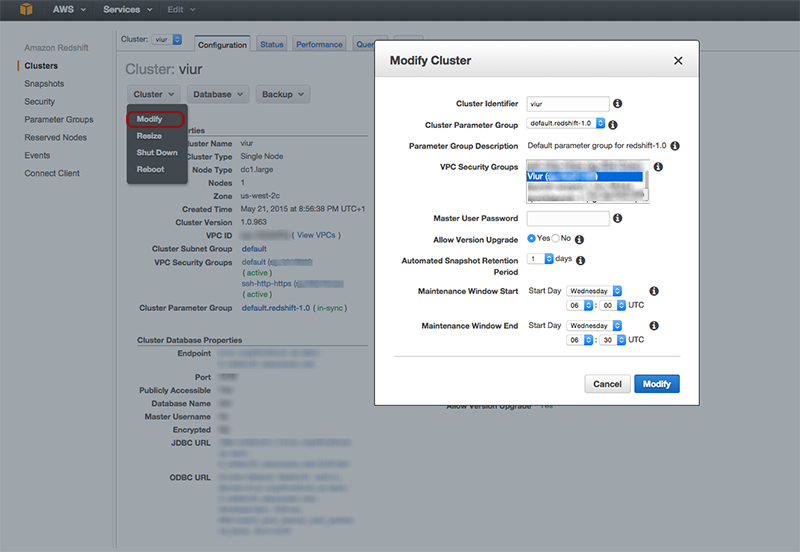

IT executives know that traditional warehousing is extremely costly from the beginning, with the initial outlay for hardware possibly costing up to the multi-millions. AWS Redshift CostĪmazon Redshift is markedly faster than traditional warehousing-but when it comes to choosing tech solutions, organizations are arguably most concerned about cost.Īs a cloud-based solution, Amazon Redshift is able to provide high-level performance affordably. We will delve deeper into these two later.

The ability to deliver this level of performance comes with the use of two architectural elements: columnar data storage and massively parallel processing design (MPP). The speed by which Redshift processes data up to these sizes is just simply impossible to attain in traditional data warehousing, making it the top choice for applications that run massive amounts of queries on-demand. Redshift delivers the fast query speeds on large data sets, dealing with data sizes up to a petabyte and more. Let’s look at how Redshift stacks up to traditional warehousing in the following areas:Īmazon Redshift is most known for its speed. This means any processing that requires complex queries and large datasets will be an ideal use case for Amazon Redshift.Īmazon Redshift vs Traditional Data WarehousesĪmazon Redshift is a direct alternative to on-premise traditional database warehouses. Is AWS Redshift Good for OLAP?ĪWS Redshift was designed for online analytic processing and BI tools. While both are Amazon Web Service products, S3 is used for product storage, and AWS Redshift is a data warehouse. There is a clear distinction between Amazon S3 and AWS Redshift. What's the Difference Between Amazon S3 and AWS Redshift? Leveraging Redshift, you can use your data to acquire new business insights. It has the capacity to scale to petabytes, but lets you start with just a few gigabytes of data. Redshift is a fully managed cloud data warehouse. Those interested in Redshift should know that it consists of clusters of databases with dense storage nodes, and allows you to even run traditional relational databases in the cloud. Redshift is Amazon’s analytics database, and is designed to crunch large amounts of data as a data warehouse. Is Amazon Redshift a Relational Database? Each Redshift cluster runs its own Redshift engine and contains at least one database. It's used for large scale data storage and analysis, and is frequently used to perform large database migrations.Įach Amazon Redshift data warehouse contains a collection of computing resources (nodes) organized in a cluster. What is AWS Redshift Used for?ĪWS Redshift is a data warehouse product built by Amazon Web Services. Based on PostgreSQL 8, Redshift delivers fast performance and efficient querying that help teams make sound business analyses and decisions. Redshift’s column-oriented database is designed to connect to SQL-based clients and business intelligence tools, making data available to users in real time. It is also used to perform large scale database migrations. What is Amazon Redshift?Īmazon Redshift (also known as AWS Redshift) is a fully-managed petabyte-scale cloud based data warehouse product designed for large scale data set storage and analysis. With the rise of cloud computing, the need for warehousing solutions that can scale up for the increasing demands of data storage and analysis has been apparent, resulting in organizations looking for alternatives to traditional on-premise warehousing.ĪWS’s Amazon Redshift is a direct response to this demand. On traditional database warehouses, queries will start taking more time, making data difficult to manage. When an organization gains traction, the size of data that needs to be stored, monitored, and analyzed expands exponentially. In this first post, we will discuss how Amazon Redshift works and why it is the fastest growing cloud data warehouse in the market, used by over 15,000 customers around the world. In this blog series, we will cover how Amazon Redshift and Sumo Logic deliver best-in-class data storage, processing, analytics, and monitoring.


 0 kommentar(er)
0 kommentar(er)
